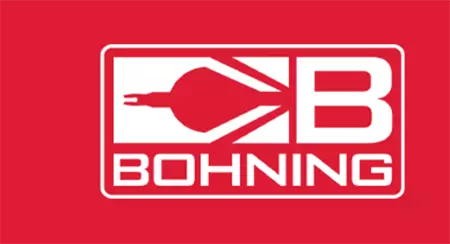HOME > PRODUCTS > ARROW PREP > CLEANING YOUR ARROW
![]() Use caution to not cut yourself on sharp surfaces.
Use caution to not cut yourself on sharp surfaces.
Vanes, Adhesive, Wrap, & Paint Removal
Vanes & Adhesive: Use “The Stripper” or the “Strip-Pro” by Bohning to strip vanes and glue from shafts. Make sure adhesive residue is entirely removed by wiping with acetone or denatured alcohol. Soaking is not necessary.

Wraps: There are three ways to remove wraps:
A. Use “The Stripper” or the “Strip-Pro” to remove the wrap.
B. Use a hair dryer to soften the adhesive and peel the wrap
C. Soak the wrapped shaft in boiling water and peel off the wrap
Paint: For carbon or aluminum shafts, soak the painted section of the shaft in acetone or Fletch-Lac thinner overnight, then scrub the paint off. For wooden shafts, we recommend using a chemical stripper specifically designed for wood.
Preparation
Check your work area (table, area and hands) for possible adhesion contaminants: oil, lotions, food, silicones, grease, carbon dust, WD-40 or other aerosol lubricants, etc. If your jig has been previously used and the jig manufacturer specifies clamps can be cleaned with acetone, let the clamp soak for a couple of hours in acetone (you may leave it overnight if more convenient). This will soften the dried glue and allow you to wipe it off easily. Numbering your clamps will allow you to identify if there are issues with any of them. Do not let excess glue sit on your jig: wipe it off with a paper towel between each use.
For new arrow shafts: Ensure shaft is cut to proper length prior to cleaning.
Cleaning the outside of the arrow shaft
• For carbon and aluminum shafts: Clean shaft with Bohning SSR and scrub with a Scotch-Brite® pad. Rinse under HOT running water and let air dry, standing the shafts upright until dry.
• For unfinished wooden shafts: Sand the surface of the shaft smooth with a fine-grit sandpaper (minimum 220 grit). Use a tack cloth to remove sawdust. If desired, apply a stain, scrub the shaft with steel wool (staining will lif the wood grain), and remove dust with a tack cloth. To seal, we recommend dipping the entire shaft in a water-based Crest Lac Clear, or in a solvent-based Fletch-Lac. Please refer to the Dipping & Cresting section for further instructions.
• For finished wooden shafts: Simply wipe the shaft with a tack cloth to remove any dust and particles.
Cleaning the inside of carbon and aluminum shafts
It is very important to clean the inside of the shaft using a cotton swab dipped in denatured alcohol. Continue cleaning, using new cotton swabs, until no traces of black residue remain.
